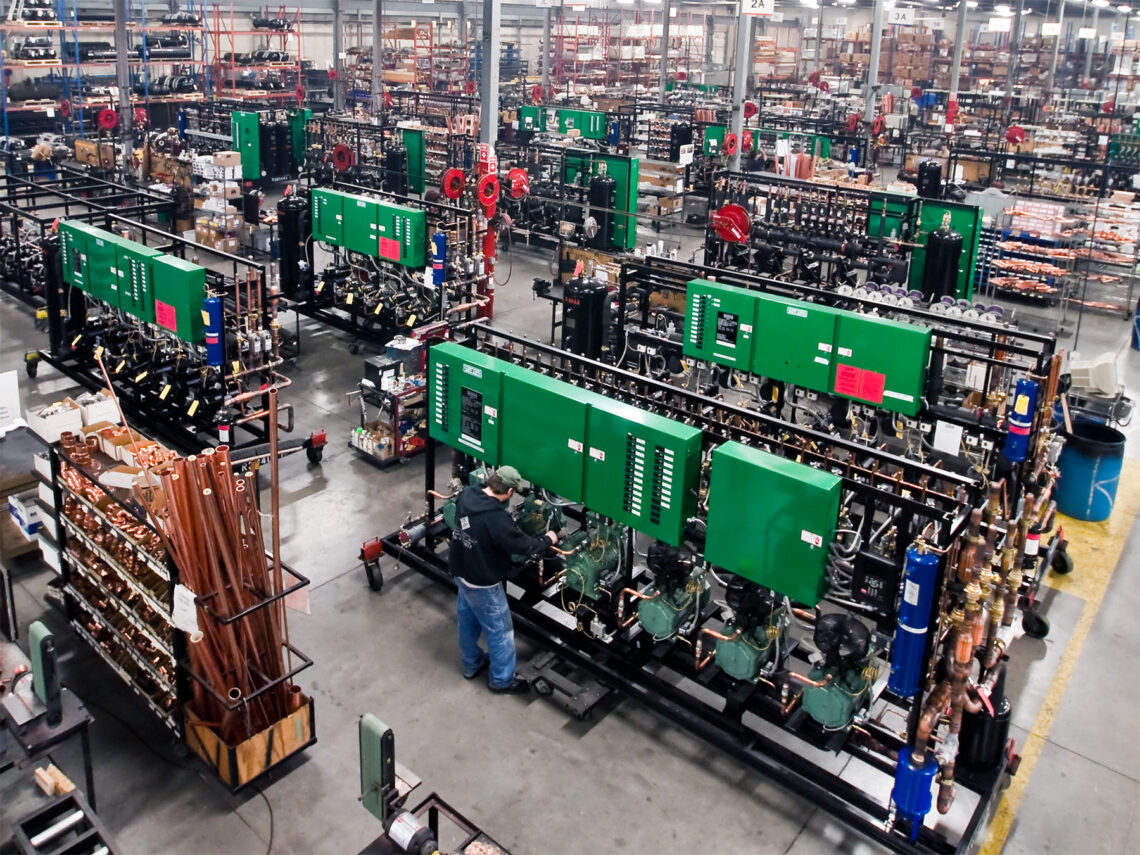Refrigerants of the Future: Commercial and Industrial Refrigerants Post AIM Act

Sustainable business practices are rapidly gaining priority as rising energy costs, evolving regulations and increasing consumer demand for environmentally friendly solutions drive change. In the refrigeration industry, the choice of refrigerant directly affects both energy costs and regulatory compliance. This blog will explore the advantages and disadvantages of low-globlal warming potential (GWP) refrigerants; Natural and Hydrofluoroolefin (HFO).
Future Refrigerant Types

Natural Refrigerants

Hydrofluoroolefin (HFO) Refrigerants
Ammonia as a Refrigerant

Ammonia (R-717) has been a reliable refrigerant in industrial refrigeration applications for over a century. Its excellent thermodynamic properties deliver efficient cooling, making it ideal for large-scale applications. Ammonia’s toxic and corrosive characteristics require strict safety protocols and specialized system designs. Ammonia is corrosive to metals, such as copper, and requires compatible materials like steel piping to be incorporated into the system. Additionally, regulatory compliance programs, especially around safety, can add to operational and installation costs. Despite these challenges, ammonia remains an attractive option due to its high availability, zero ozone depletion potential (ODP), and zero GWP, making it one of the most sustainable refrigerant choices.
The Zero Zone ColdLoop™ Chiller uses ammonia as the primary refrigerant to cool a secondary loop with glycol. This system is efficient for applications requiring ultra-low temperatures, such as ice rinks. To see an example of a Zero Zone ColdLoop™ Chiller installation, see our case study of Crown Coliseum in Fayetteville, NC.
Zero Zone Genesys™ Natural Refrigeration Systems also has an ammonia option for retail, food processing, cold storage, and pharmaceutical manufacturing and storage applications.
CO₂ as a Refrigerant

CO2 (R-744) industrial and commercial refrigeration systems are gaining traction as a sustainable alternative to traditional HFC systems due to their numerous environmental and operational benefits. Zero Zone has been designing and installing CO2 systems for over a decade. The Zero Zone Genesys™ Natural Refrigeration Solutions are energy efficient and have established reliability. With advancements in system design, greater availability of high-pressure components, and expanding technician training programs, CO2 systems are an attractive option for businesses looking for sustainable, reliable and energy-efficient refrigeration solutions. To read more about our commitment to sustainability, read our case study on a net-zero carbon emissions Walgreens retail store.
One major challenge to CO2 systems is the high operating pressure. Special components and piping are necessary to handle these high pressures, increasing installation costs. The safety risk of high pressures necessitates trained technicians to perform maintenance on CO2 systems, increasing maintenance costs. Additionally, CO2 systems may become less energy efficient when they operate in transcritical mode. Transcritical mode is triggered by ambient temperatures exceeding the critical temperature of CO2, 87.8°F. However, innovations like parallel compression, adiabatic gas coolers, and ejectors enable CO2 to maintain effective performance with good efficiency across various climate conditions and geographic locations.
CO2 is a non-toxic and non-flammable refrigerant and operates with exceptional energy efficiency when in subcritical mode. While some CO2 systems require a higher initial investment, the long-term savings can offset the upfront costs. CO2’s excellent heat transfer properties allow smaller pipe and compressor sizes to be used compared to most other refrigerants. Additionally, CO2 systems are highly adaptable, providing flexibility and reliability.
As CO2 refrigerant becomes more popular, training programs for technicians increase in availability. Zero Zone has trained hundreds of technicians since adopting a training program in May of 2022. Visit our CO2 training page to see our current openings and register for a class.
HFO Refrigerants

ASHRAE classifies these refrigerants by their low toxicity (A) and mild flammability (2L), so they are safer than traditional flammable refrigerants. Regulations on their storage, transportation, and usage are still evolving. It is up to the design engineers and vendors to know and comply with local regulations.
A2Ls are non-toxic, making them safer for retail applications. Their lower GWP rating makes them more environmentally friendly than traditional synthetic refrigerants. Refrigerant manufacturers designed HFOs to work the same as HFCs. In fact, some HFOs are blended with HFCs. R-454C, the refrigerant used to replace R-404A and R-22, is a blend of R-1234yf and R-22.
Manufacturers of refrigerants are bound by allowances in the AIM Act phasedown schedule. The total production allowance of HFCs is based on the metric tons of exchange value equivalent (MTEVe). One metric ton of exchange value equivalent is equal to one metric ton of carbon dioxide. High-GWP refrigerants have a higher MTEVe value This meaning more A2L refrigerants can be produced than HFC refrigerants.
Zero Zone Systems: Using our Past to Change the Future
With decades of experience in the refrigeration industry, Zero Zone has been at the forefront of designing and implementing innovative, sustainable refrigeration solutions. Our expertise in designing custom solutions to meet your unique sustainability goals includes regulatory compliance and strict adherence to safety guidelines. If you need to upgrade your system, get expert training for your team, or need guidance on the future of the refrigeration industry, Zero Zone will be with you every step of the way.
For more information, visit our products page or contact a sales rep today!
